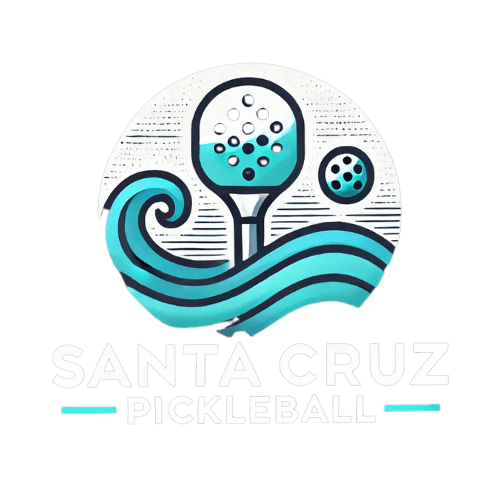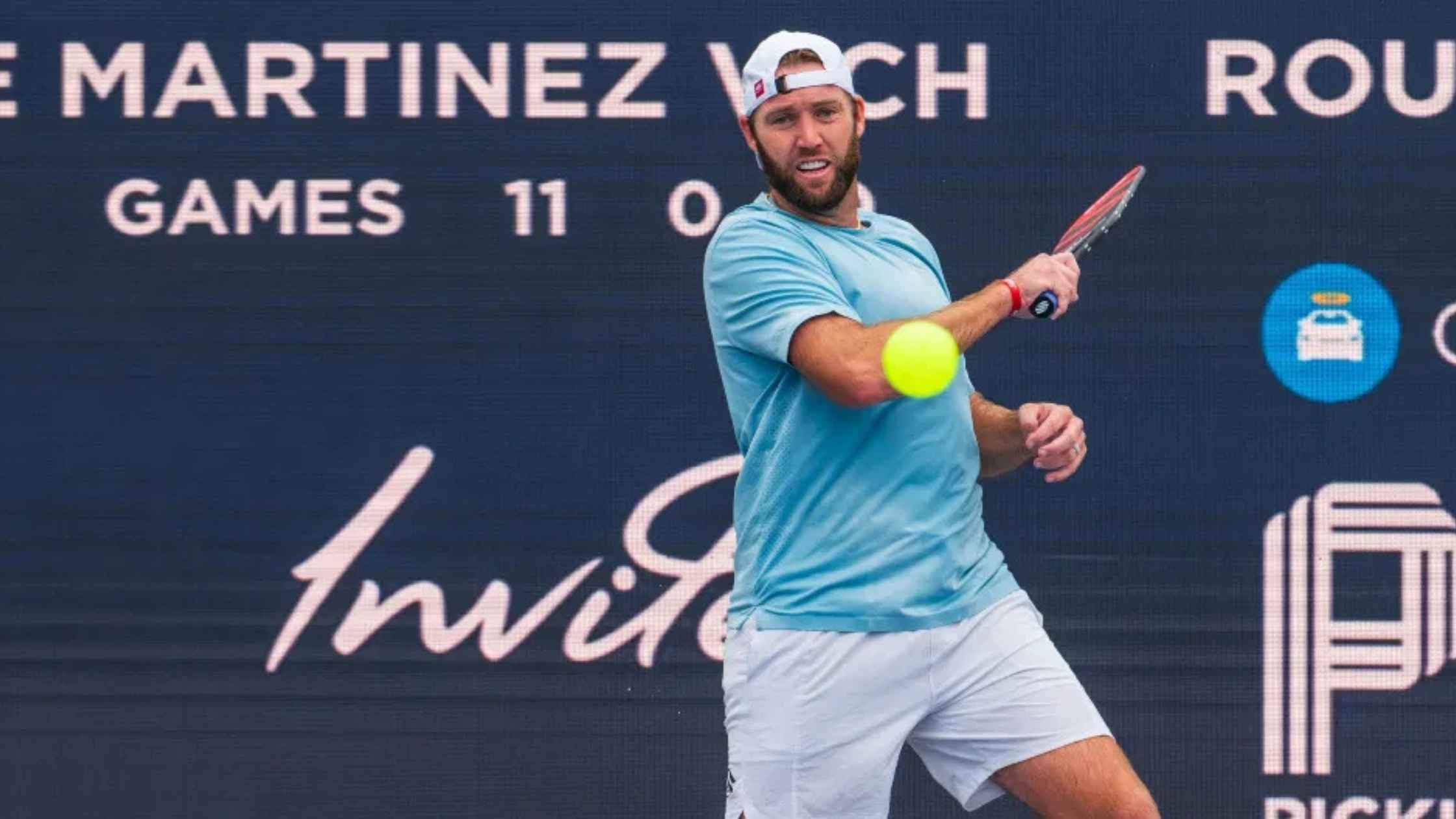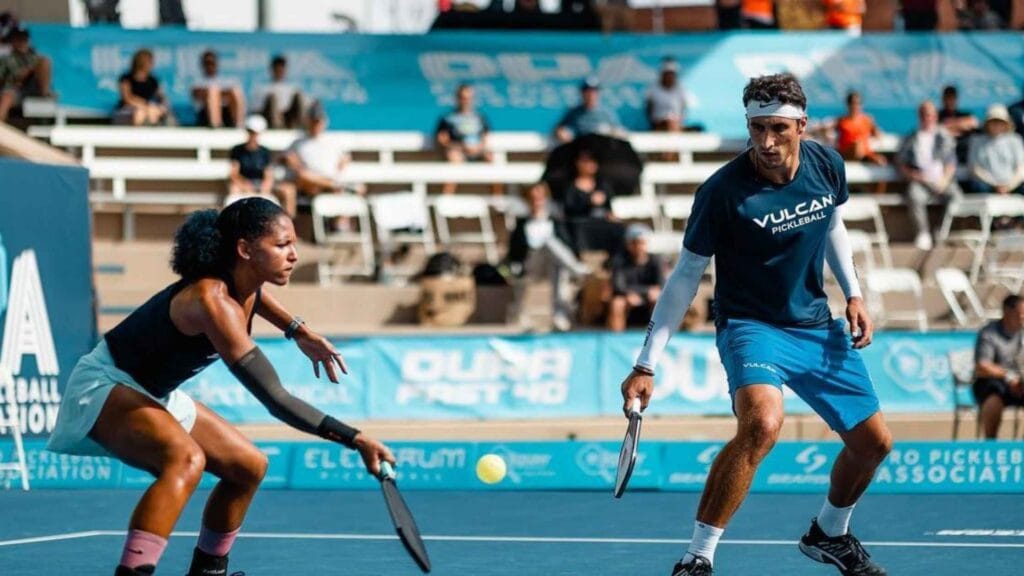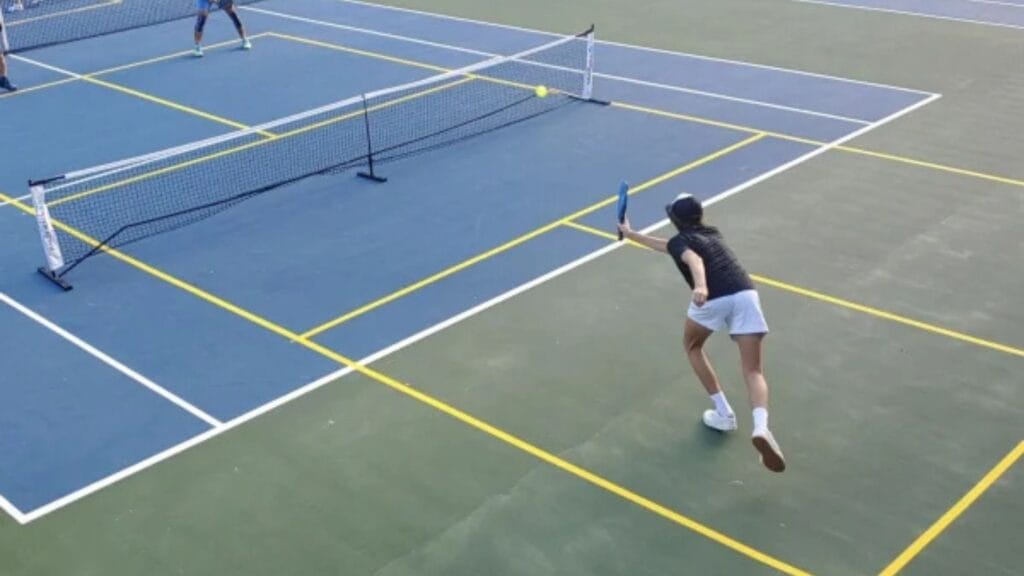Are you an advanced player looking for the perfect pickleball singles strategy? Pickleball singles matches demand a higher level of fitness, skill, and mental toughness than doubles games. There’s no partner to cover the gaps or assist with strategy; you are solely responsible for every shot, move, and decision.
Every point won or lost is on you, which makes the experience more intense and rewarding. Developing a solid pickleball singles strategy for advanced players is essential if you want to dominate your opponents consistently.
Understanding how to control the pace of the match, when to attack, and how to defend will make you a stronger, more confident player.
Whether you are competing in a tournament or playing for fun, mastering advanced singles techniques will dramatically improve your performance on the court.
Importance Of A Strong Serve In Pickleball Singles Strategy For Advanced Players
The serve is the only shot in pickleball that you have complete control over without any pressure from your opponent. In singles play, it becomes even more important because it sets the tone for the rally.
An advanced pickleball singles player knows that a powerful, deep serve can pin an opponent at the baseline and make their return more predictable and less effective.
By forcing your opponent to return from deep in the court, you gain valuable time to anticipate their shot and position yourself for an aggressive follow-up.
It’s crucial to vary the placement of your serves to keep your opponent guessing—mix in wide serves, body serves, and sharp angles to disrupt their rhythm.
Adding spin, speed variation, and height changes will make it difficult for them to settle into a predictable pattern, giving you the upper hand from the very first shot of the rally.
Suggested reading: Best Pickleball Players: 20 Pros At The Top Of The Game In 2025
Mastering the Third Shot Drop for Effective Court Control
One of the most critical shots in singles pickleball is the third shot drop. After you serve and your opponent returns, you often face a pivotal decision: do you drive the ball hard or attempt a soft drop shot?
In most cases, executing a well-placed third shot drop allows you to neutralize your opponent’s advantage and regain control of the rally.
A successful drop shot lands softly in the opponent’s kitchen, forcing them to move forward and often resulting in a defensive return.
By bringing your opponent to the net, you can create opportunities to pass them or lob over them if they are slow to react. The key to a perfect third shot drop is consistency and control.
Focus on your paddle angle, follow through gently, and aim to keep the ball low over the net.
Practicing this shot under different circumstances will give you the confidence to use it as a reliable weapon in competitive play.
Use Deep Returns to Keep Opponents Back
Returning deep is not just a defensive move—it’s a strategic choice that can set the tone for the entire point. In singles pickleball, a deep return forces your opponent to stay behind the baseline, limiting their ability to approach the net and control the rally.
A deep return buys you precious time to recover and reposition yourself on the court. It also reduces your opponent’s angles for attacking shots, forcing them to take more risks or hit less aggressive returns.
To make your deep returns even more effective, aim for the corners or target your opponent’s weaker side. A low, deep return with pace will make it harder for them to execute an offensive third shot.
Developing a reliable deep return not only keeps your opponents on the defensive but also gives you control of the game’s tempo, which is critical in high-level singles play.
Master Court Positioning to Stay Ahead of the Game
Good court positioning in singles pickleball is a game-changer. With no partner to rely on, you are responsible for covering every inch of the court, making proper positioning and quick recovery essential.
After each shot, you should immediately move back to a balanced ready position near the centerline, equidistant from both sidelines.
This central spot gives you the best chance to cover passing shots and defend against drives or drops. When at the net, your positioning should be close enough to cut off angles but far enough back to react to lobs.
Maintaining optimal positioning requires constant awareness of your opponent’s movements and shot choices.
Anticipating where they will place the ball allows you to move earlier and get into position before they even make contact.
Advanced players know that efficient movement and smart positioning make the difference between being reactive and being proactive in singles play.
Suggested reading: Pickleball Tips for Beginners: How to Improve Fast and Have Fun
Effective Footwork: The Foundation of Singles Success
Footwork is the foundation upon which all advanced pickleball singles strategy is built. Without good footwork, even the best shot selection and execution can fail.
Singles pickleball requires covering the entire court, moving side to side, forward, and backward—often within the same rally.
Quick, balanced footwork allows you to get to the ball early and in the right stance to make an accurate shot.
Taking small, controlled steps rather than large, lunging strides keeps you balanced and ready to change direction quickly.
Proper footwork also reduces the risk of injuries, as it places less strain on your knees and joints.
Incorporate footwork drills like agility ladders, cone drills, and side shuffles into your training routine to enhance your speed and coordination.
The more efficient your footwork, the more energy you conserve, allowing you to sustain a high level of play throughout the entire match.
Anticipating Your Opponent’s Next Move
The ability to anticipate your opponent’s next move can give you a significant advantage in pickleball singles. By reading their body language, foot positioning, and paddle angle, you can often predict where they intend to place the ball.
Advanced players use this information to gain a split-second head start in positioning, which can be the difference between making an easy return or scrambling to reach the ball.
For example, if your opponent opens their shoulders early, they might be preparing for a cross-court shot. Conversely, a closed stance might indicate a down-the-line drive.
Anticipating their tendencies—such as whether they favor their forehand or backhand under pressure—can also guide your decisions.
The more you play and observe, the better your instincts will become. Developing this predictive ability will make your movements more efficient and increase your confidence in executing counter-strategies.
Suggested reading: Pickleball Singles Tips: Expert Guide To Winning Singles Matches
Hitting Passing Shots with Precision
Passing shots are essential weapons in the arsenal of an advanced singles pickleball player. When your opponent is at the net, you need to decide whether to pass them down the line or cross-court.
A down-the-line pass is the shortest distance to a winner but requires pinpoint accuracy and timing. A cross-court pass, on the other hand, offers a larger margin for error and allows you to use angles to pull your opponent off the court.
It’s important to stay unpredictable by mixing up your passing shots. Watch your opponent’s movement—if they are leaning toward one side, aim for the opposite.
Stay calm under pressure and focus on smooth, controlled strokes rather than brute force. Practicing both types of passing shots will give you the confidence to choose the right option in the heat of competition.
Using Dinks Strategically in Singles Play
While dinks are more commonly associated with doubles, they have a valuable place in singles strategy, particularly at an advanced level.
Using a dink in singles can break your opponent’s rhythm, force them to move forward, and open up the court for your next shot.
A well-placed dink brings your opponent into the non-volley zone, where they might be less comfortable, especially if they prefer staying at the baseline. After executing a dink, be prepared for a variety of responses.
If they pop the ball up, be ready to attack with a drive or smash. If they dink back, maintain patience and look for opportunities to create angles or force errors.
Dinks require precise control and a soft touch, so dedicate time in practice to perfecting them.
They are especially effective when your opponent is off-balance or fatigued, giving you a chance to capitalize on their weaknesses.
Lob Shots: High Risk, High Reward
The lob is one of the most underused yet highly effective shots in singles pickleball strategy for advanced players.
A well-timed lob can completely shift the momentum of a rally, forcing your opponent to backpedal quickly and often resulting in a weak return or outright winner.
Use the lob when your opponent is crowding the non-volley zone or leaning forward aggressively. Aim high and deep, giving the ball enough height to clear their reach and land near the baseline.
However, a poorly executed lob can lead to an easy overhead smash, so precision and timing are crucial. Practice your lobs regularly to ensure you have confidence in their execution during matches.
When used strategically, the lob can reset a point, create openings, and catch your opponent by surprise.
Mental Toughness: Stay Focused, Stay Confident
Mental toughness is as important as physical ability in advanced singles pickleball. Playing singles can be mentally exhausting since every decision, point, and mistake is entirely your responsibility.
Stay focused on your strategy, and avoid letting frustration take over after a mistake or lost point.
Develop a routine for managing your emotions between points—whether it’s deep breathing, positive self-talk, or focusing on one key technical cue.
Confidence comes from preparation and belief in your abilities. Trust your training and stay patient, even when things aren’t going perfectly.
Mentally tough players are resilient, adaptable, and able to stay calm under pressure. These qualities are often what separate champions from good players.
Endurance Training for Pickleball Singles
Physical conditioning plays a major role in how well you perform in singles pickleball matches. Advanced singles play requires sustained energy, speed, and power.
Incorporate cardiovascular workouts like running, cycling, and high-intensity interval training to build your stamina. Strength training, particularly focusing on core muscles, legs, and shoulders, improves power and reduces injury risk.
Flexibility and mobility exercises such as yoga or dynamic stretching improve your range of motion and decrease recovery time.
An effective training regimen will allow you to maintain peak performance during long rallies and tough matches. When your fitness is superior to your opponent’s, you’ll have the advantage as the match progresses.
Drills to Sharpen Your Pickleball Singles Strategy
Drills are essential for reinforcing the key components of an advanced singles pickleball strategy. Start with serve and return drills to develop accuracy and consistency.
Work on your third shot drop by practicing with a partner or ball machine, aiming for consistency in placement. Footwork drills, such as ladder runs and cone drills, help improve your speed and balance.
Passing shot drills force you to make quick decisions under pressure, while dink and lob drills enhance your touch and control.
Regular, focused practice will sharpen your instincts and increase your confidence on the court, making you a more formidable singles competitor.
Video Analysis: Learn From Your Matches
Recording your matches provides valuable insights into your strengths and areas for improvement.
Watching your performance allows you to analyze shot selection, footwork, and decision-making without the pressure of live play.
Identify patterns in your play—are you favoring certain shots? Are there moments when you are out of position? Look for missed opportunities to pass, lob, or attack.
Reviewing matches helps you recognize these moments and develop a plan to address them. Many top players use video analysis as part of their ongoing development.
Making small adjustments based on what you observe can lead to significant improvements in future games.
Pickleball Singles Strategy for Advanced Players: The Winning Mindset
A winning mindset in pickleball singles is about confidence, adaptability, and mental discipline. Stay focused on your strategy while remaining flexible enough to adjust when needed.
Play to your strengths and exploit your opponent’s weaknesses. Maintain a calm, positive attitude, and keep your energy consistent throughout the match.
Visualize success, trust your preparation, and never lose sight of your game plan.
A strong mindset, combined with advanced techniques and physical conditioning, will elevate your singles game and help you achieve consistent success on the court.
Suggested reading: Pro Pickleball Tips That Will Instantly Improve Your Game
FAQs
What is the key difference between pickleball singles and doubles?
Singles require more movement and court coverage. You’re responsible for every shot and need better positioning and stamina.
How do I improve my pickleball singles serve?
Focus on depth and placement. Mix speeds and spins to keep opponents guessing. Consistency and variety are key to success.
What is the best way to recover after each shot in singles?
Return quickly to a balanced position near the centerline. Stay ready to move in any direction and maintain balance.
How can I anticipate my opponent’s next shot?
Watch their paddle and body language. Learn their tendencies. Experience and observation help you predict shots more effectively.
Is it worth using dinks in singles play?
Yes, dinks can break your opponent’s rhythm, bring them forward, and create opportunities for passing shots or lobs.
What fitness training helps with pickleball singles endurance?
Cardio for stamina, strength for power, and flexibility for movement. Combine all three for balanced fitness and better performance.
Final Thoughts On Pickleball Singles Strategy For Advanced Players
Mastering pickleball singles strategy for advanced players takes time, practice, and commitment. By improving your serve, court positioning, footwork, and mental toughness, you can take your game to the next level.
With patience, determination, and a winning mindset, you’ll be ready to dominate the court and achieve your pickleball goals.




